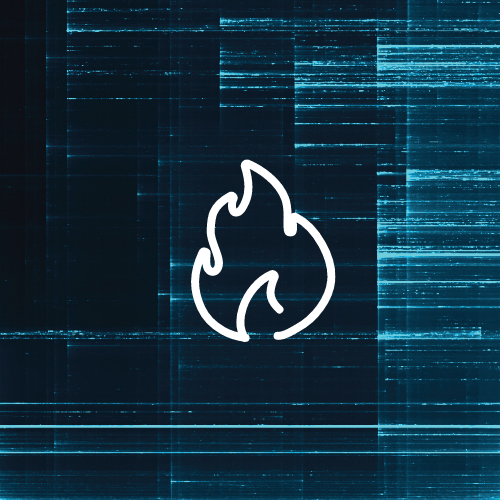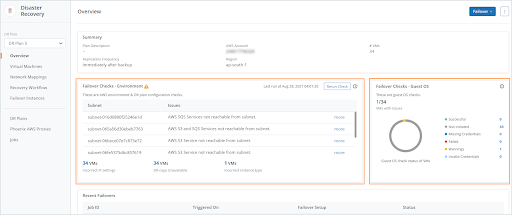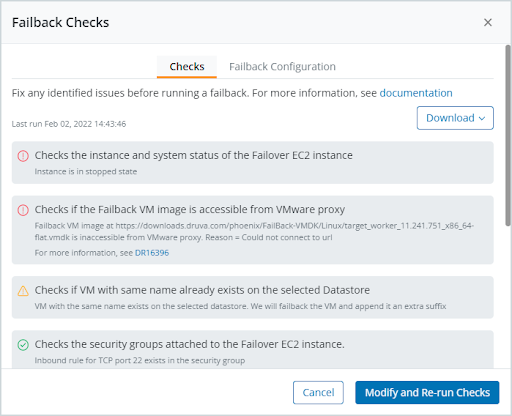Organizations face more security threats and risks of data loss than ever before — and even with the best technology and processes in place, it’s only a matter of time before ransomware or disaster strikes. That’s why you need cloud disaster recovery (DR) — for fast, air-gapped recovery of business-critical data. Putting a comprehensive DR plan in place should be a crucial step in your IT strategy. You should also have a strategy to periodically test your DR solution to avoid last-minute surprises during a disaster or ransomware attack. As trust is lost in a ransomware attack, the ability to recover in the cloud provides customers with a safe environment for recovery even while security teams may be investigating the source of the breach.
A DR plan is nothing without frequent testing
IDC research indicates close to 90% of companies have some form of backup or disaster recovery in place¹. However, an untested disaster recovery plan has no guarantee of working when required. Some organizations think their backup or DR copies will help them in the event of a ransomware attack. A July 2021 IDC survey of 791 organizations found that of customers impacted by ransomware, approximately 32% of customers who did not pay the ransom were able to recover encrypted data files from backup2. The frequency of changes without IT environments, especially around networking and security, is increasing with an emphasis on security. As your environment changes and your business needs evolve, DR testing becomes critical for your overall DR strategy. Determining the frequency and degree of testing (full or partial DR simulation) are two key elements to include in your plan.
Cloud DR and disaster recovery-as-a-service (DRaaS)
Druva’s cloud disaster recovery solution allows organizations to improve business resilience while reducing costs and complexity. With Druva, you can easily meet RTO and RPO requirements with our simple and reliable failover orchestration for VMware VMs.
Druva’s disaster recovery functionality enables you to recover and spin up already backed up VMs in your Amazon Web Services (AWS) account (i.e. your AWS VPC). This functionality enables high-performance business continuity without the need for additional dedicated on-premises software, storage, or hardware, which reduces costs and improves IT agility through greater automation and less complexity. VMs are recovered on-demand in the cloud to reduce system downtime to minutes.
How Druva helps with your DR testing strategy
A cloud-native solution allows you to immediately spin up VMs in the cloud for development and testing (dev-test) however you need to ensure network configuration and permissions on your cloud account are configured in a secure manner along with the cost to operate the Cloud account. Ensure your VMs operate as expected and that data that has been backed up is in compliance with your RPO. Testing is not a one-time affair — it should be a regular and ongoing part of your IT strategy. Set a cadence that makes sense for your organization and is part of your overall DR strategy. Here are some benefits of using Druva DRaaS with your DR testing strategy.
- One-click DR failover and failback
- Separate DR failover settings for production and test
- Enhanced security with AWS PrivateLink.
- Proactive checks for DR failover and failback.
- Integration and automation of DR operations with business continuity tools like ServiceNow and BMC Remedy, among others
Let’s delve deeper into how Druva proactively checks the AWS and on-premises environments, and the guest operating system of a VM to give you recommendations that can ensure that your DR failovers and failbacks are successful when disaster strikes.
DR failover checks
Druva DR failover recovers the VM in your AWS account based on the settings configured in the DR plan. Druva runs guest OS checks for VMs to ensure that they are ready for DR and also checks your AWS environment for potential failures.


